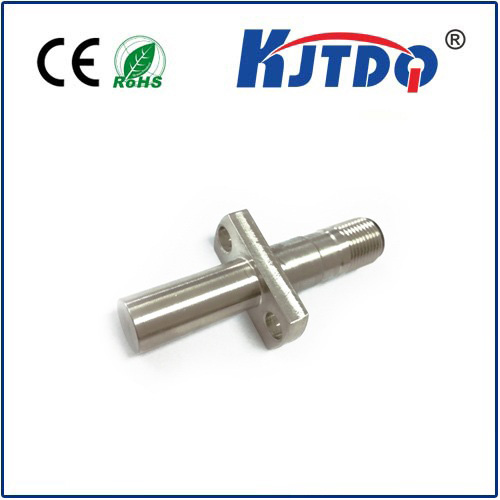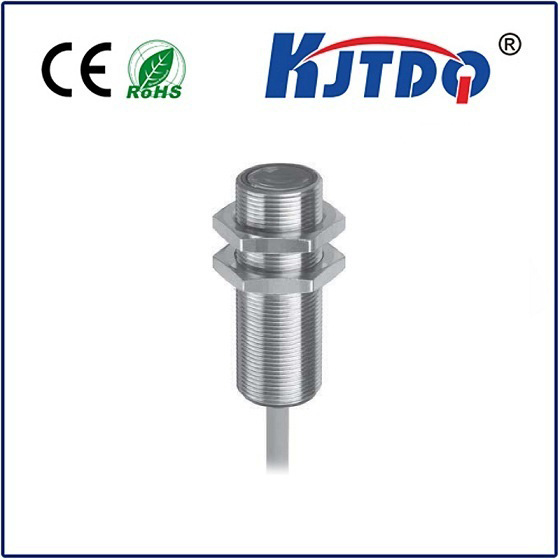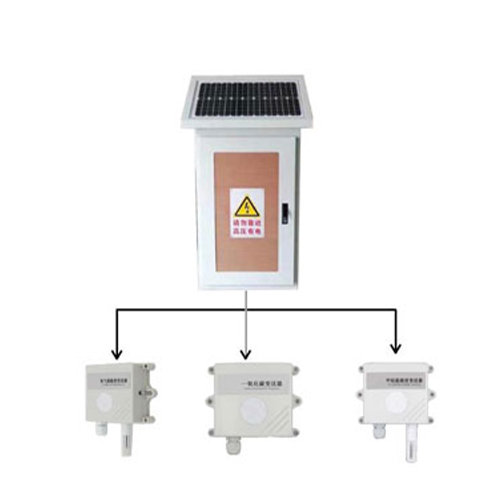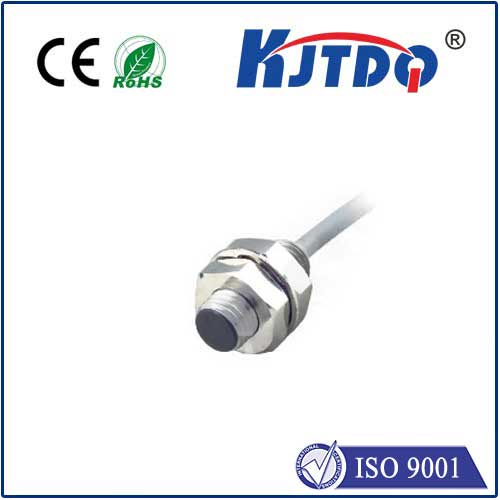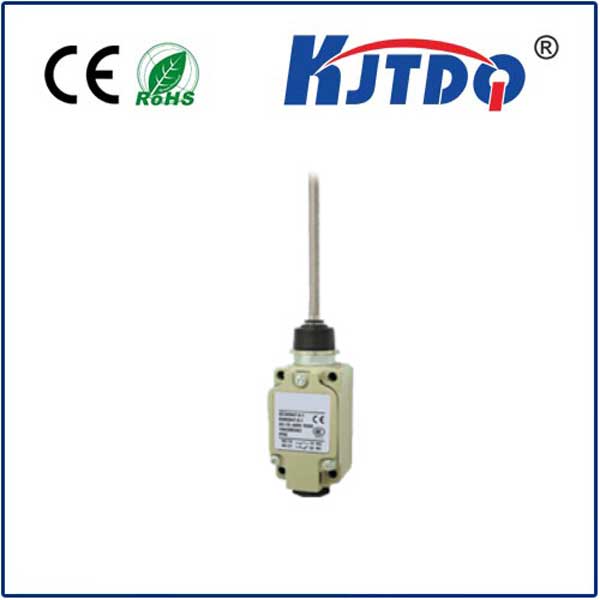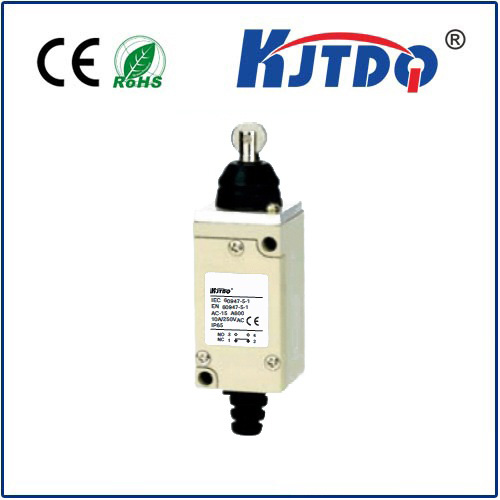E2E-X18MF1-M1-Z proximity sensor
- time:2025-09-22 13:19:33
- Click:0
Mastering Precision Detection: Unpacking the Omron E2E-X18MF1-M1-Z Proximity Sensor
In the relentless world of industrial automation, where milliseconds translate to productivity and precision is non-negotiable, reliable sensing is the bedrock of success. Downtime is costly, malfunctions cause bottlenecks, and inaccurate detection leads to scrap and rework. Amidst a sea of components promising performance, one name consistently stands out for unwavering reliability in demanding applications: the Omron E2E-X18MF1-M1-Z proximity sensor. This specific model, a stalwart in Omron’s renowned E2E series, represents a pinnacle of inductive sensing technology, engineered specifically for high-performance environments. Understanding its capabilities is key to unlocking smoother operations and enhanced efficiency on your factory floor.
Demystifying the Model: What Does E2E-X18MF1-M1-Z Mean?
Omron meticulously codes its sensors to reveal their core characteristics right within the model number:

- E2E: Denotes the core series, Omron’s high-performance inductive proximity sensors.
- X18: Indicates the sensor’s body diameter – 18 mm. This is the standard M18 form factor, ubiquitous in industrial settings for mounting ease and compatibility.
- MF1: Specifies the mounting style and sensing face.
- F: Represents a Flush-mountable design. Unlike shielded (embedded) sensors, the flush mounting allows the sensing face to be flush with the mounting surface without significant loss of sensing distance. This is crucial for installations where the sensor face needs to be protected or embedded within the machine structure.
- 1: Indicates the threading type, typically metric M18 x 1 threads.
- M1: Defines the sensing distance and output function.
- M: Stands for a Standard Sensing Distance. For this M18 sensor, it translates to a rated sensing distance of 5 mm ± 10% for steel (Fe 360). Remember, sensing distance can vary slightly depending on the target metal.
- 1: Signifies a 3-wire DC type sensor with a Normally Open (NO) output configuration.
- Z: This suffix is critical. It denotes the operating voltage range. The “Z” variant operates on a wide-range DC supply of 12-24 VDC ±10%, 3-wire (non-polarized). This flexibility is invaluable, allowing the sensor to be integrated into a wide variety of control systems without requiring specific voltage regulators.
Engineered for Industrial Resilience: Core Features
The E2E-X18MF1-M1-Z isn’t just another sensor; it’s built to tackle the harsh realities of manufacturing:
- Robust Construction: Encased in a rugged nickel-plated brass body, it offers superb resistance to physical impact, vibration, and corrosive industrial environments commonly found in machining, automotive, and material handling.
- Superior Environmental Protection: Boasting an IP67 rating (NEMA 6 equivalent), this proximity sensor is impervious to dust ingress and can withstand temporary immersion in water up to 1 meter for 30 minutes. This makes it suitable for washdown areas, outdoor equipment, or environments prone to coolant splashes.
- Extended Temperature Range: Designed for extremes, it operates reliably within a broad -25°C to +70°C temperature window, ensuring consistent performance in freezing warehouses or near hot machinery.
- High Switching Frequency: Capable of detecting rapidly moving targets, its high switching frequency is essential for high-speed production lines, packaging machinery, and sorting systems where every detection cycle counts.
- Short-Circuit and Reverse Polarity Protection: Integrated safeguards protect both the sensor and your control circuitry from accidental wiring errors or electrical faults, enhancing system longevity and reducing maintenance headaches.
- Reliable Inductive Sensing: Utilizing an electromagnetic field, it detects the presence of metallic objects (ferrous and non-ferrous, though sensing distance varies) without physical contact. This non-contact operation eliminates wear and tear, ensuring a long operational lifespan.
Where Does the E2E-X18MF1-M1-Z Shine? Application Scenarios
This sensor’s blend of ruggedness, precision, and flexible voltage operation makes it a top choice across diverse sectors:
- Machine Tooling: Detecting tool position, workpiece presence on CNC lathes/mills, turret indexing, and end-of-stroke confirmation on hydraulic/pneumatic cylinders. Its flush mounting (MF1) is ideal for protected installations within machine housings.
- Automotive Assembly: Monitoring part presence on conveyor lines, verifying robot end-effector positions, checking door/panel alignment, and confirming component seating during assembly. The IP67 rating handles coolant and washdown areas common in auto plants.
- Packaging Machinery: Ensuring carton blank presence, detecting fill levels (metal containers), verifying case sealing, and controlling product flow on high-speed lines. High switching frequency is crucial here.
- Material Handling: Detecting pallets on conveyors, confirming actuator positions on robotic arms, sensing presence in elevators/lifts, and monitoring metal parts on sorting lines.
- General Factory Automation: Position sensing for slides, gates, and valves; presence detection for metal parts in bins or feeders; and end-of-travel detection for moving machinery. The wide voltage range simplifies integration into existing DC control panels.
Installation and Performance Considerations: Maximizing Reliability
To leverage the full potential of your E2E-X18MF1-M1-Z sensor, attention to installation is key:
- Mounting: Ensure the sensing face is flush with or recessed within the mounting surface (as per MF1 design). Avoid protrusion that could cause physical damage. Tighten securely using the M18 threads.
- Sensing Distance: Remember the rated 5mm sensing distance is for mild steel (Fe 360). For other metals (stainless steel, aluminum, copper), expect a reduction factor. Always refer to Omron’s technical documentation for specific reduction ratios and perform real-world testing. Maintain a reasonable gap between the target and the sensing face to prevent collision and account for potential target variations.
- Target Size: The detectable target must be at least equivalent to the sensor’s sensing face diameter for reliable operation, especially at the full rated distance. Smaller targets will require closer proximity.
- Wiring: Correctly connect the 3 wires:
- Brown (BN): Connect to the positive DC supply voltage (+V).
- Blue (BU): Connect to the negative DC supply voltage (0V).
- Black (BK): This is the Normally Open (NO) load output. Connect this wire to the input of your PLC, counter, relay, etc. When a target is detected, this output switches ON (conducts current to 0V).
- Environment: While IP67 rated, avoid prolonged direct high-pressure water jets directly on the cable entry. Protect cables from abrasion and sharp bends. Minimize exposure to strong electrical noise sources like large motors or welding equipment; ensure proper grounding practices throughout the system.
Why Choose the Omron E2E-X18MF1-M1-Z?
In a market saturated with alternatives, this specific sensor model stands apart due to Omron’s reputation for uncompromising quality and long-term reliability. Its combination of the wide 12-24VDC Z-range, the practical flush-mountable MF1 design, and the proven robustness required for industrial use creates a compelling package. Engineers trust the E2E series for critical detection points where













